Category: Success Story
Finance program receives national accolades
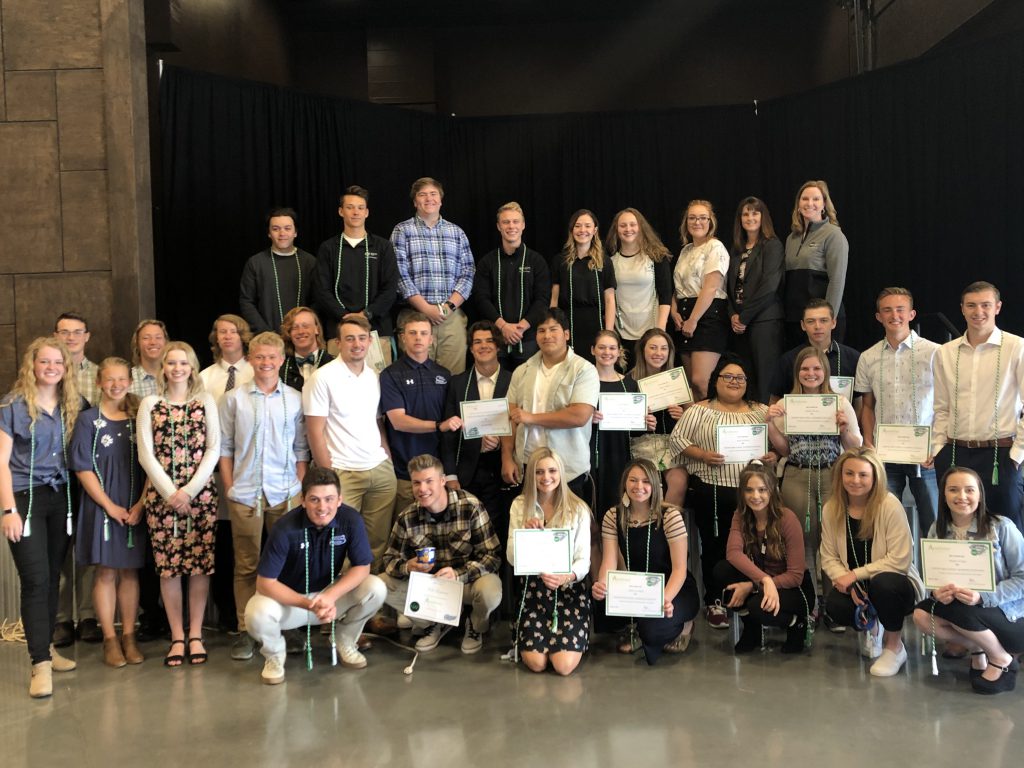

When Bev Hott started teaching business classes at the Career Technical Center at Skyline High School in 2008, only 12 students were enrolled in her accounting class.
“I taught a web course, a video course and accounting. There was no pathway or progression of courses and students started to ask, ‘Why am I taking this if it doesn’t lead anywhere?’” said Hott.
Hott, an educator with 28 years’ experience, was convinced that the answer to that question lay in giving students the classes they needed to succeed, not necessarily the courses they wanted to take. She also knew students would be more interested in her courses if they were sequenced in a way that related to the careers they were interested in.
After conducting extensive research, Hott found the National Academy Foundation (NAF), a network of education, business and community leaders who work together to ensure high school students are ready for college or a career. NAF’s approach to work-based learning and career exploration appealed to Hott. Every course contains a project component, and students can learn and apply real-world skills, like creating a business plan and pitching it to the advisory committee in the entrepreneurship class.
“We are super excited to reach the Distinguished level. The kids who have participated in the program understand what that distinction means. We want to maintain that status and keep providing this opportunity for our students.”
Bev Hott
“I also liked the fact that if students complete all the courses in the pathway and pass the certification test, they become NAFTrack Certified,” said Hott. “That means they receive preferential interviews at some of the top employers in the nation, like Lenovo, Verizon and Marriott.”
With her supervisor’s support, Hott set out to start a NAF Academy of Finance program at her school and hasn’t looked back. In the time since, Hott’s program has grown from just a dozen students to over 240, which Hott attributes to the hands-on, project-based nature of the curriculum. The program focuses on the financial pathway at its core, but it also incorporates elements of business, community service, career exploration and personal finance.
Students are encouraged to make presentations—complete with business cards—to groups like the Chamber of Commerce, Kiwanis and Civitan International, to explain what they’re doing in the program and ask for support. Through these experiences, students not only learn how to present themselves professionally but also have an opportunity to network with community leaders.
Those connections can lead to internships, visits to employers’ worksites, job shadowing and other opportunities. In fact, every student in the program is required to complete a 120-hour paid internship at the employer of their choice. If the internship is completed, it can count towards their senior project.
“Students get a chance to see what a job would be like and decide if that’s a direction they want to go,” said Hott. “Equally important, students learn that money comes from work; if you don’t work, you don’t get paid.”
Students learn to manage their hard-earned money through the personal finance course.
“It’s actually their favorite course,” said Hott. “We have a lot of guest speakers, and they learn everything from how to make a budget to how to manage credit responsibly.”
Service-learning and community service are also components of the program. In addition to partnering with the school’s student government organization to raise money and collect donations for Community Food Basket every January, they also engage in service projects at their school, like helping set up PSAT testing.
The holistic approach to applied learning and civic engagement has contributed to the program’s overall growth and quality. The program has achieved NAF’s Model level for the past two years and was one of 138 schools nationwide to achieve NAF’s Distinguished level during the 2019-2020 school year. The distinction is earned by annual assessment measures and site visits conducted by distinguished leaders, outside experts and NAF staff.
“We are super excited to reach the Distinguished level,” said Hott. “The kids who have participated in the program understand what that distinction means. We want to maintain that status and keep providing this opportunity for our students.”
Part-time teaching becomes full-time calling for Emmett teachers
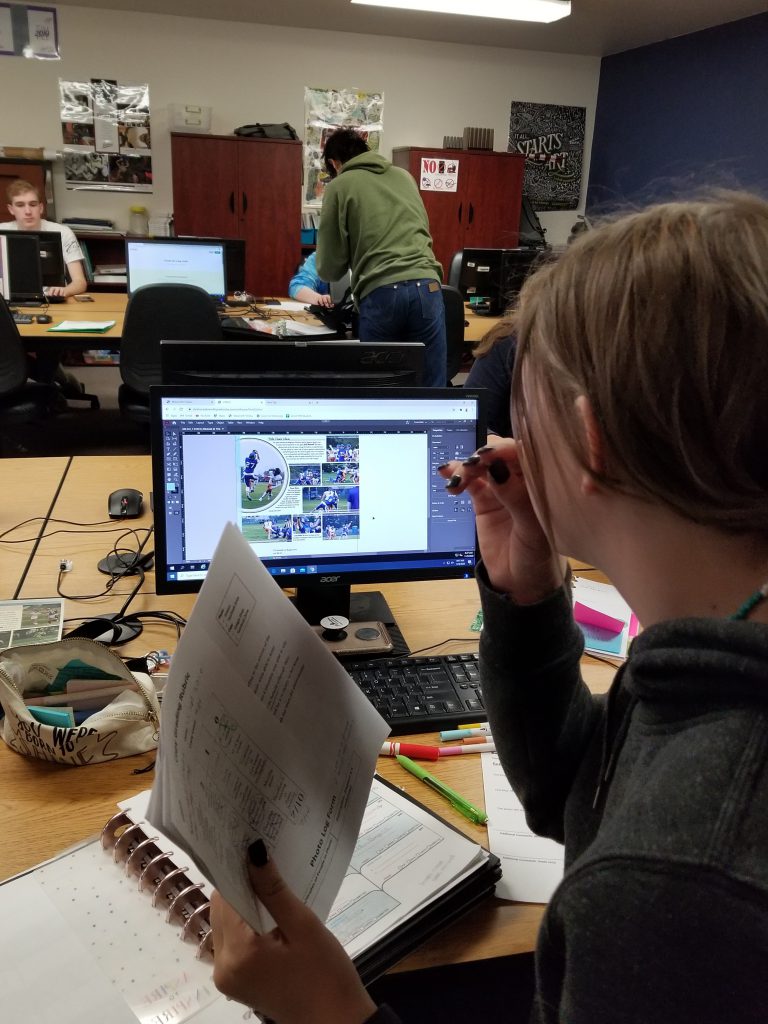

“They’re not just learning how to use industry-standard design software; they’re also learning lessons about time management, problem-solving and working as a team.”
Susan Salisbury
When Susan and Rob Salisbury started teaching Career Technical Education in the Kamiah School District, their intent was initially to provide advanced opportunities for their four children.
“The smaller school districts just couldn’t afford those types of teachers,” said Rob. “The administrators came to us and asked what it would take for us to start teaching at the school. At first, we were doing part-time IT work and teaching just a handful of classes to provide an opportunity for those kids. But soon, we both discovered we thoroughly enjoyed working with students and watching them learn.”
The part-time teaching jobs soon became a full-time calling, and when Dr. Bill Knickrehm invited the Salisburys to move from Kamiah to Emmett to start the Payette River Regional Technical Academy (PR2TA) in 2010, they jumped at the chance, with Susan teaching the graphic design classes and Rob teaching pre-engineering.
Early on, the Salisburys were committed to providing hands-on instruction and collaborating with Emmett High School (EHS) and the community to give their students real-world experience. They were also committed to empowering students to be self-directed and accountable for their progress.
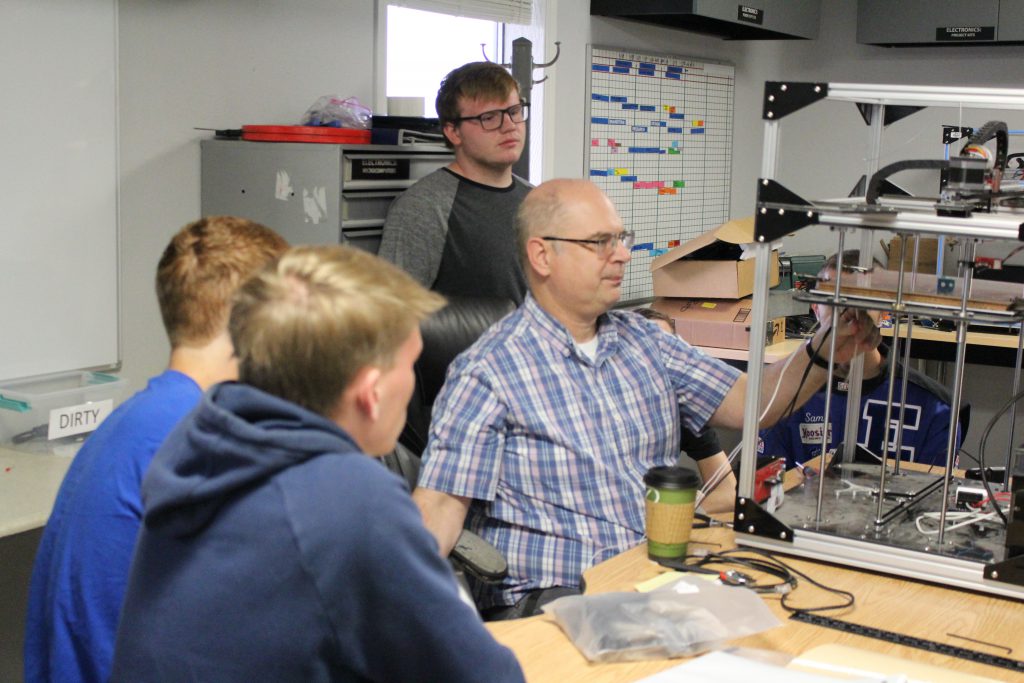
“They’re not just learning how to use industry-standard design software; they’re also learning lessons about time management, problem-solving and working as a team,” said Susan. “For example, my graphic design kids are completely responsible for laying out the EHS yearbook. The editor assigns stories and sets deadlines, not me, and the editor does daily round-robins to chart their progress.”
When PR2TA started, five of the classes were housed in mobile units on the EHS campus, and the engineering classes were held two miles off-site. Teachers and students had to get creative to ensure they could make the most of transportation time to and from EHS.
“We adopted the Agile methodology to review what we did the day before, and what we would be working on that day on the bus,” said Rob. “Students could also ask questions and troubleshoot, so when they arrived on-site, they were ready to work. And on the way back, we’d review what we did and discuss what we’d be doing the next day.”
Over a decade of dedication to quality instruction and real-world skills paid off during the 2018-2019 school year,* when both the graphic design and pre-engineering programs earned Distinguished status in IDCTE’s CTE program awards. Both programs had a 100% Technical Skills Assessments (TSA) participation rate, and a 100% pass rate for both the TSA and the Workplace Readiness Assessment.
Interest in what the Salisburys and other teachers at PR2TA were doing continues to grow, and so do their programs. In May 2020, the PR2TA board of directors seized the opportunity to purchase the old USDA building complex on Highway 16 and consolidate all the programs into one campus. Over the summer, all the PR2TA teachers worked together to assist with moving, painting and setting up classroom and lab areas.
“We are so proud of the efforts made by our teaching staff to ensure that face-to-face learning would take place beginning in August,” said Patti O’Maley, CTE coordinator for PR2TA.
Rob echoes O’Maley’s sentiment.
“We [the teachers] knew that every dollar we saved in moving and doing the work ourselves could go back into the programs, so we were only too happy to do so,” said Rob.
In fall 2020, six of the programs were moved to the new campus, and plans are in the works to remodel the kitchen to accommodate the culinary arts program and construct new buildings for auto shop, welding and agricultural science. An aviation-based curriculum is in the works, and a Cessna 150F was recently donated to PR2TA for future course offerings.
While coordinating schedules between activities at EHS and classes at PR2TA is still a challenge, students and teachers are loving the convenience of being located on the same campus—and the indoor plumbing.
“You take for granted things like not having to go outside to use the bathroom,” said Susan. “Or, we used to have to schedule meetings with other teachers, and now we can just pop down the hall.”
*Due to the coronavirus, no assessments were conducted during the 2019-2020 school year.
Industry connections and experience put north Idaho program on the map
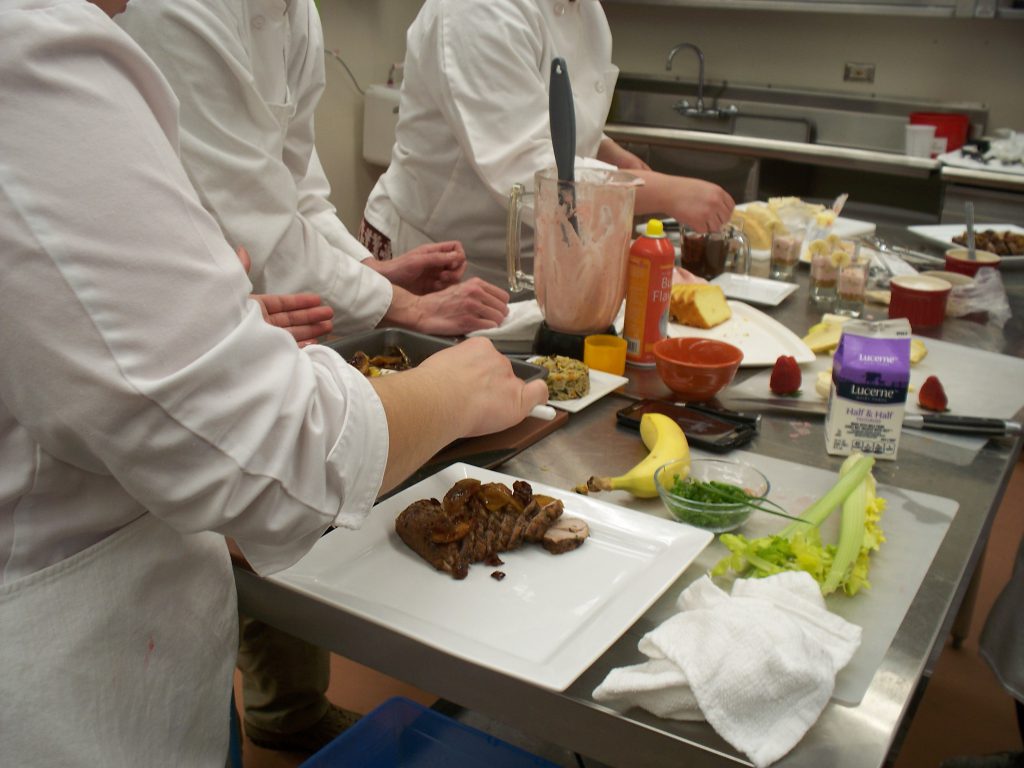

Rodney Farrington didn’t plan to teach hospitality management. But after ending a 28-year relationship with the hospitality corporation that employed him, the non-compete clause in his contract prohibited him from working in the industry he loved for three years.
“I had no idea what I wanted to do next, so my wife suggested I go back to Lewis-Clark State College (LCSC) and get an associate degree in hospitality management,” said Farrington.
After he graduated in 2012, Farrington opened a restaurant in Uniontown, Washington. He was content running his restaurant—until he received a phone call from LCSC asking if he’d fill in as an adjunct professor for the rest of the spring 2016 semester.
“Once I feel into the world of CTE, I understood how I could connect the industry I’ve been involved with my whole life with helping students get the skills and theory they need to start their own successful careers.”
Rodney Farrington
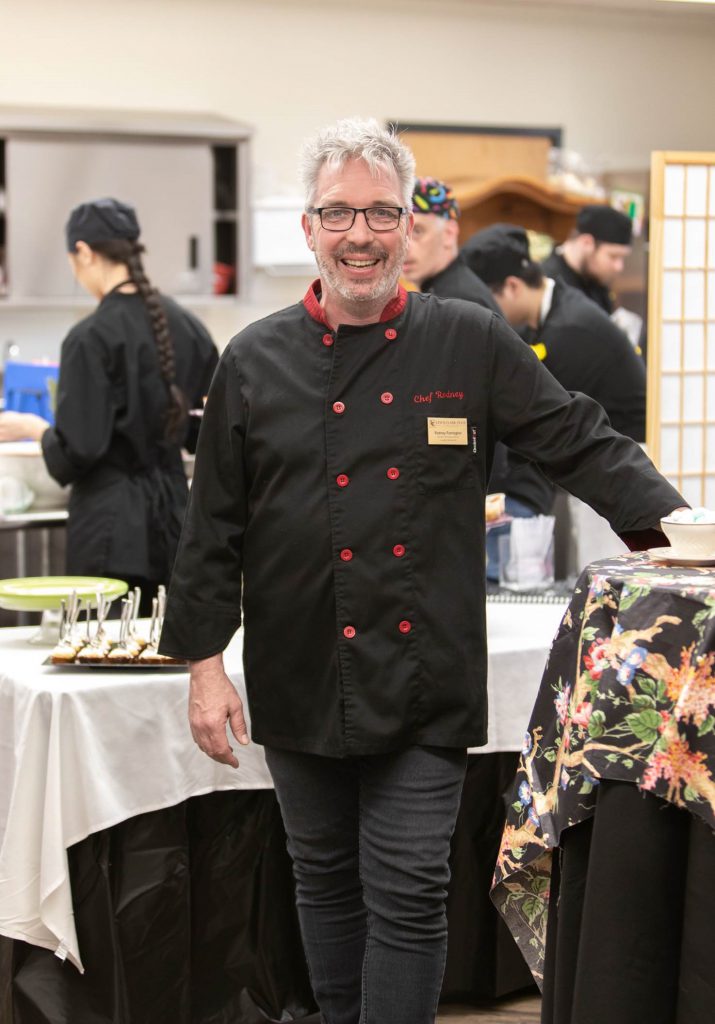
“The professor that taught me had quit due to health reasons, leaving two students with no professor to help them complete the program,” said Farrington. “I never in my life thought of myself standing in front of a class imparting my wisdom on the students. I just did it for the experience; I thought it would be nice to have those two classes on my resume, but I ended up absolutely falling in love with the job.”
Five years later, Farrington has taken what his predecessor had on file and added his own twist to it. Initially, he removed the classes he didn’t think were relevant and created a true hands-on connection to industry for each class.
“Once I fell into the world of CTE, I understood how I could connect the industry I’ve been involved with my whole life with helping students get the skills and theory they need to start their own successful careers,” said Farrington. “I only get them for two years. To the best of my ability, I want to create a real-life connection to what they’ll experience in the industry. That’s why I have them complete a project-based learning outcome in each course.”
Examples of Farrington’s hands-on approach to education include planning a trip around the world in Introduction to Hospitality, creating a business plan for a food truck in Hospitality Managerial Accounting, and designing a restaurant from the ground up in Food and Beverage Management.
“That entails designing a menu, understanding the pricing structure, using desktop publishing applications to design the menu, and presenting the concept to ‘investors,’” said Farrington. The “investors” include bankers, investors and financial planners affiliated with the industry who serve on Farrington’s Technical Advisory Committee (TAC).
“Money spent on training and recruiting is one of the largest expenses employers incur,” said Farrington. “The people on my TAC say they would far rather hire someone who has a good understanding of what the job looks like day in and day out and invest in them than train someone from the ground up and risk high turnover rates.”
It was the desire to reduce turnover that brought Farrington to McCall’s Shore Lodge in 2017. Because of the work Farrington did redesigning his classes—and the partnerships and connections he built in the process—he was invited by the Albertson Foundation and the A. L. Scott Foundation to discuss ways to reduce turnover and improve employee retention at the Shore Lodge.
“They lose almost half of their employees when students go back to school in the fall. They came to me looking for a way for student employees to stay on-site while completing their CTE-driven education,” said Farrington.
After hearing the Shore Lodge’s concerns, Farrington developed a program he calls online, on-site industrial education (OIE). Under his model, the employer provides pay, possible packaged amenities like meals and lodging, and any other additional benefits while the students work on-site getting hands-on, industry-driven training, and completing their degrees. Upon graduation, employers can offer tuition reimbursement as a job perk for every year that student stays on. Farrington has one student piloting his OIE concept this semester.
“For each class, we have to identify specific benchmarks with each student and their supervisor to verify what they’ve accomplished and document that they’ve done sufficient work to earn the degree,” said Farrington. “For example, in the Food and Beverage Management, we can connect the theory of inventory control with evidence of inventory control in practice on the job.”
The Shore Lodge is excited about the prospect of using Farrington’s OIE model in practice, and the Sun Valley Resort has expressed an interest in OIE, too. Farrington is excited about what the model can mean for Idaho’s hospitality industry and his students.
“With Idaho being the number one state people are moving to, hospitality and tourism are growing. I truly believe Idaho could be the forerunner in the new, post-coronavirus version of hospitality, travel and tourism education. I want this to become a small, boutique hospitality management program for those up-and-coming celebrities in the field,” said Farrington.
 Official Government Website
Official Government Website